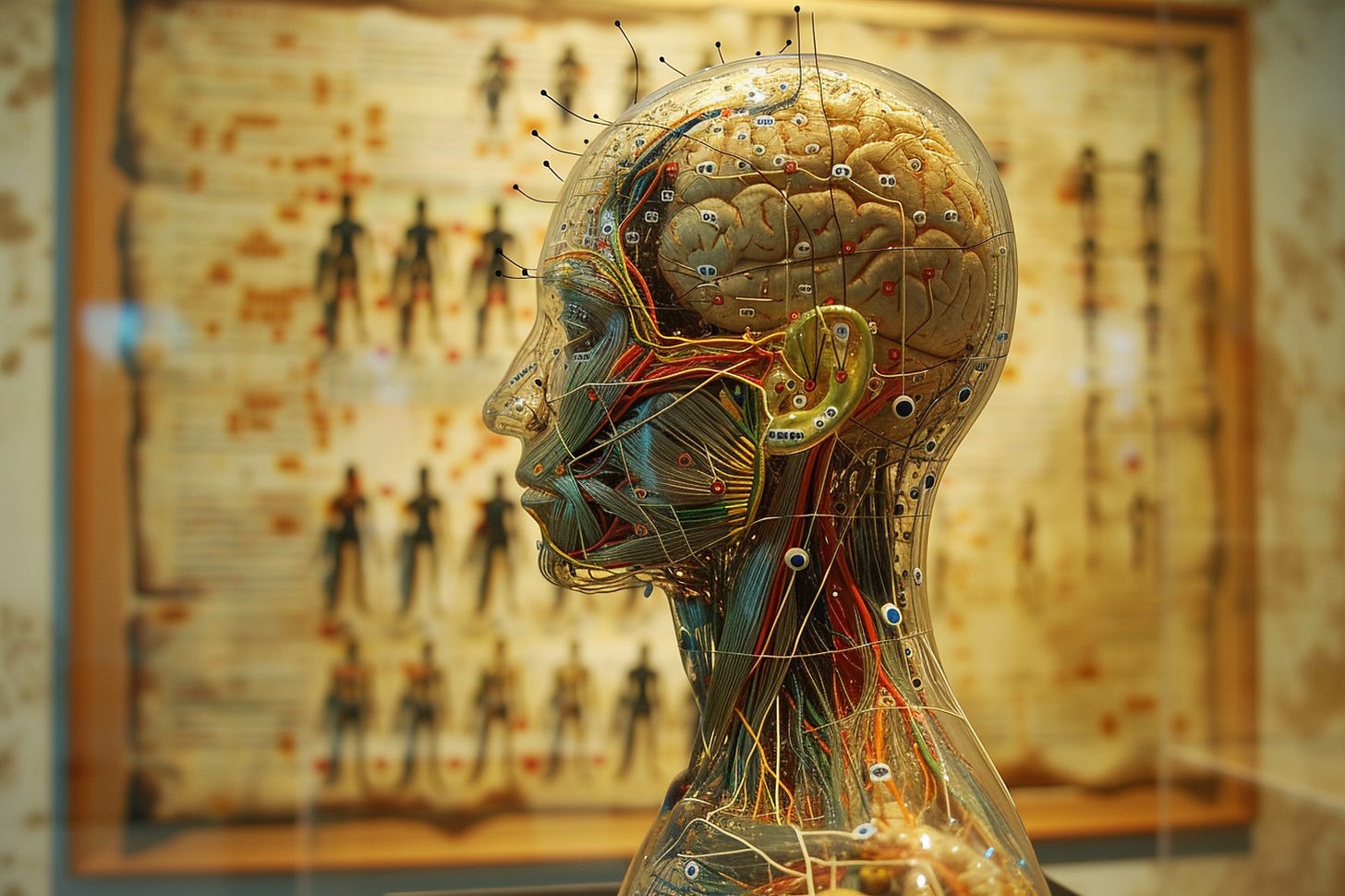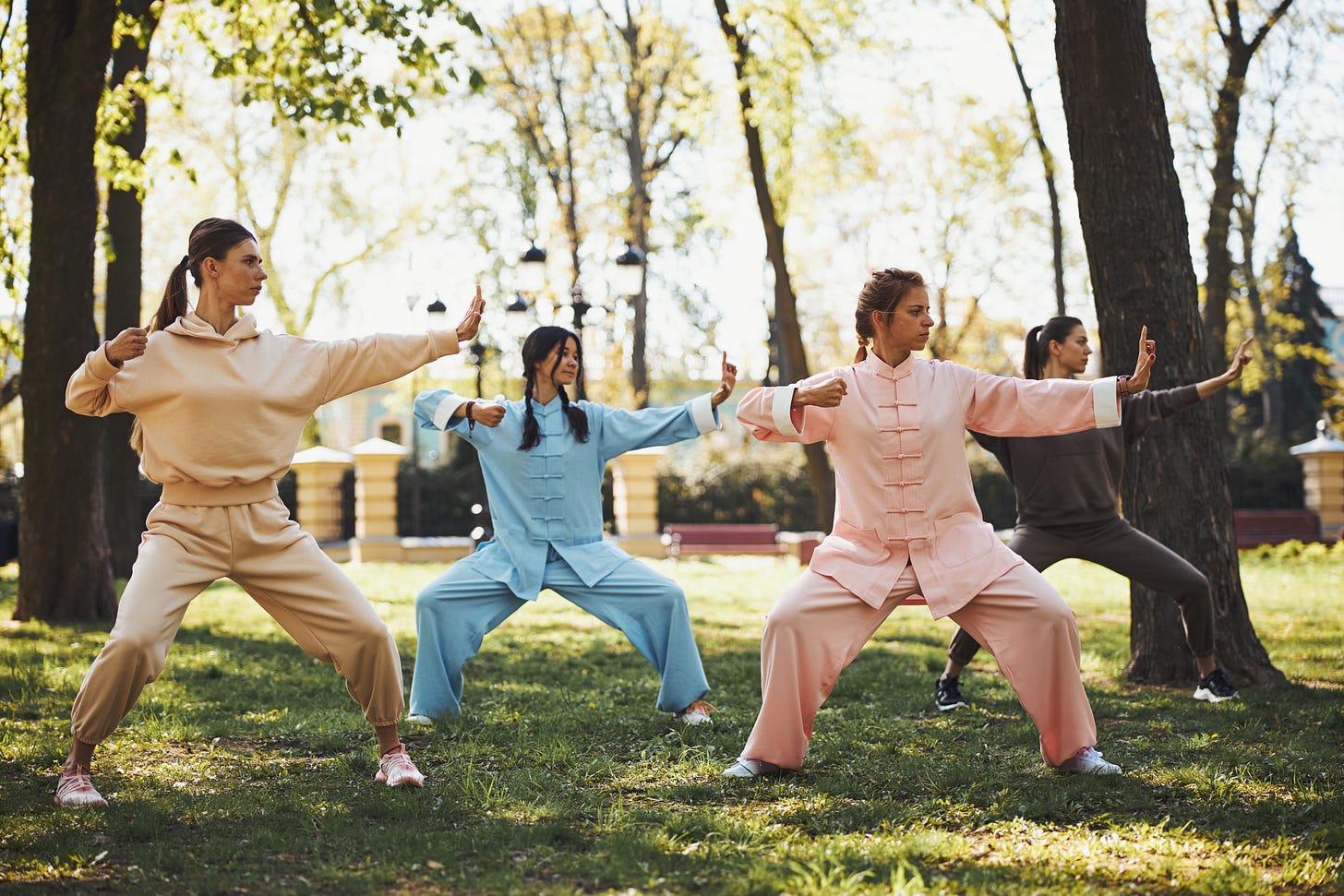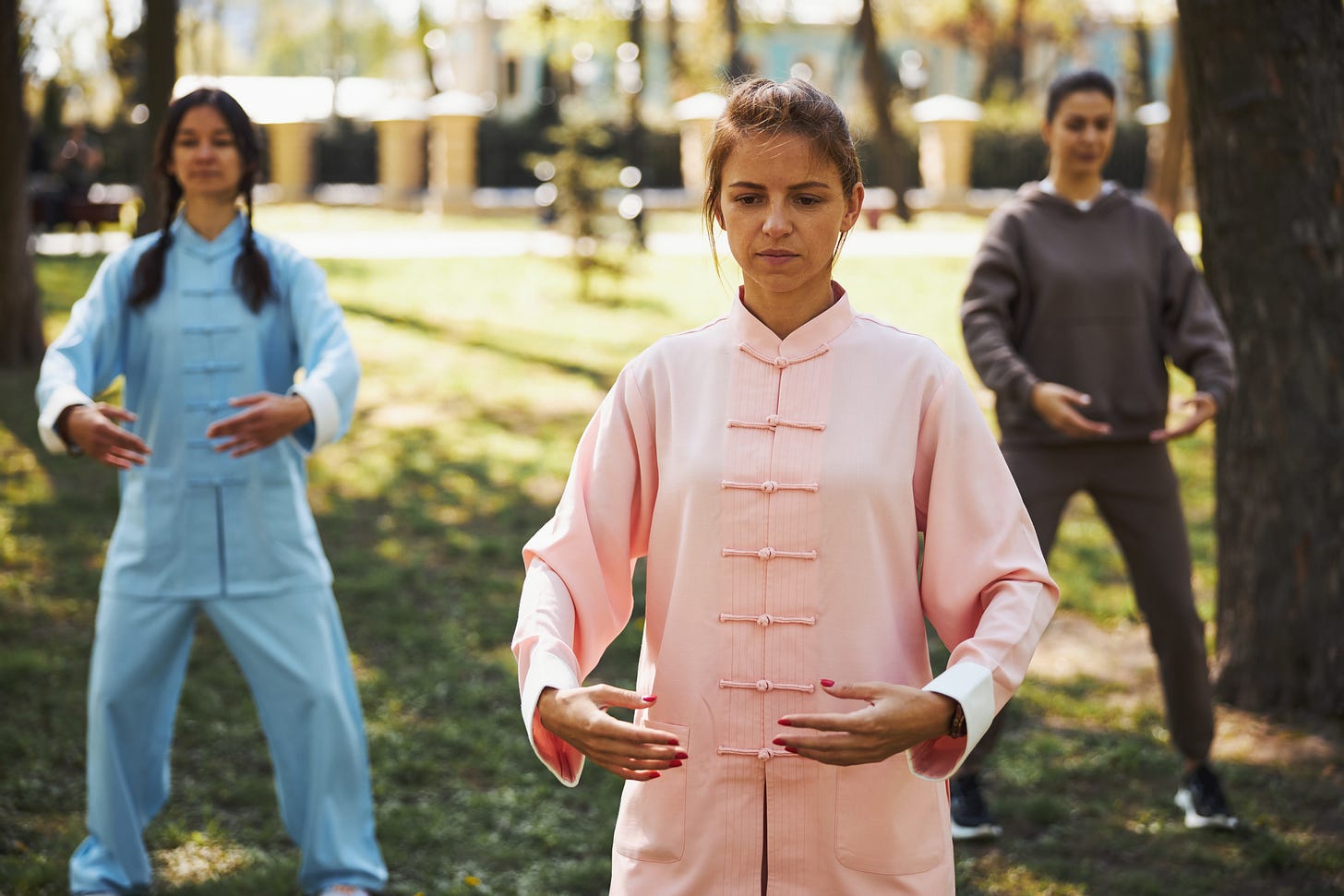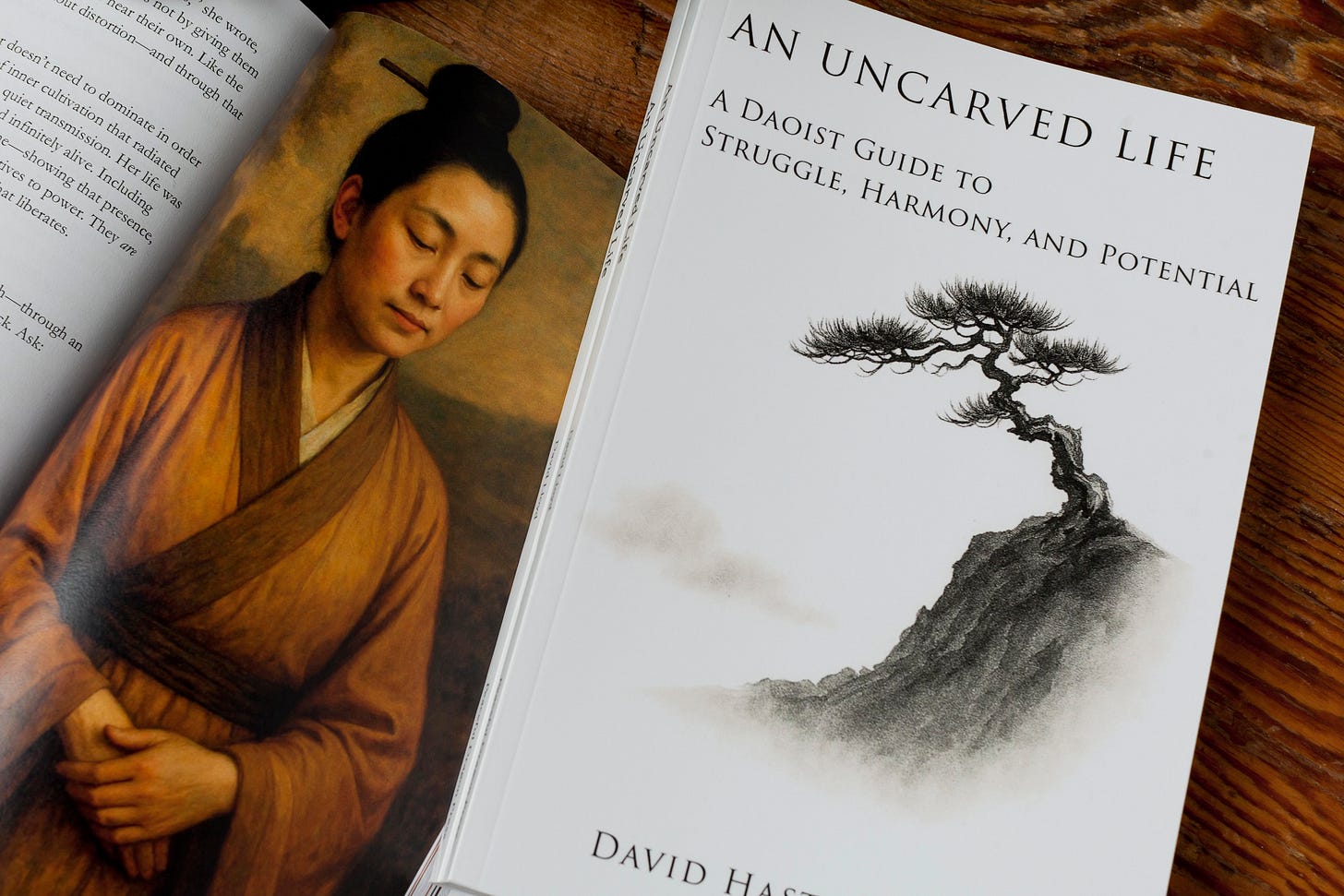Peer-Reviewed Research on Qigong and Acupressure: A New Path for Easing Chemotherapy-Induced Nerve Pain
Chemotherapy saves lives. But for many cancer patients, the treatment leaves behind a painful legacy: tingling, numbness, and burning sensations in the hands and feet known as chemotherapy-induced peripheral neuropathy (CIPN). CIPN is one of the most common and debilitating side effects of cancer treatment, and unfortunately, medicine has offered few reliable solutions. According to the American Society of Clinical Oncology’s 2020 guideline update, no standard therapy exists for CIPN beyond limited relief from the antidepressant duloxetine. That makes the search for safe, effective, and accessible alternatives urgent.
A new study published in ESMO Open in 2025 takes an innovative approach. Researchers tested whether combining qigong—a gentle mind-body exercise—with self-administered acupressure could reduce CIPN symptoms and improve quality of life for cancer survivors. The results are encouraging, pointing to a low-cost, non-invasive practice that patients can learn and use on their own.
Why Qigong and Acupressure?
Both qigong and acupressure are rooted in traditional Chinese medicine (TCM).
Acupressure works by applying finger pressure to specific points on the body, believed to open blocked pathways of energy (qi) and improve circulation. Modern research suggests it may influence blood flow, nerve growth, and inflammation.
Qigong combines slow movements, breathing, and mindful awareness. Studies have shown it can reduce stress, regulate inflammation, boost endorphins, and even influence proteins that support nerve health.
On their own, each has shown small benefits for cancer-related symptoms. The researchers believed that combining them might offer a stronger, complementary effect: qigong to calm the nervous system and open the body’s energy pathways, and acupressure to directly stimulate circulation and nerve repair.
How the Study Was Designed
This was a randomized controlled trial (RCT)—the gold standard for testing medical interventions.
Who participated?
110 cancer patients in Hong Kong, all experiencing moderate to severe CIPN after finishing chemotherapy with drugs such as taxanes or platinum compounds. Average age was about 62, and most participants were women with breast cancer.How was it structured?
Participants were randomly split into two groups: one received the combined qigong and acupressure program, while the other was placed on a waitlist (meaning they received no special intervention during the study but could try it afterward).What did the intervention include?
16 weeks of supervised sessions: twice weekly, first led by both a qigong master and a traditional medicine practitioner, then continued with reinforcement.
Home practice: participants were asked to practice at least three times per week on their own, using videos and booklets. Each session included 20 minutes of Baduanjin qigong (a classic eight-movement routine) followed by 10 minutes of acupressure at six key points (LI4, LI11, ST36, SP6, CV6, LV3).
The idea was that qigong would “open the meridians” and prepare the body, while acupressure would strengthen the therapeutic effect.
What outcomes were measured?
The main measure was self-reported CIPN severity, using a validated questionnaire called FACT/GOG-Ntx.
Secondary measures included objective nerve tests (nerve conduction), handgrip strength, physical performance, fall incidence, and overall quality of life (FACT-G).
Assessments were done at baseline, at 16 weeks (end of intervention), and at 28 weeks (12 weeks after finishing).
What the Researchers Found
The findings were striking in some areas, modest in others:
CIPN Symptoms Improved
The intervention group reported a significant drop in CIPN severity compared with the control group. On average, their symptoms decreased by nearly 4 points more than controls—a change that exceeded the threshold for clinical importance. As the authors put it, “a combined qigong and acupressure intervention versus waitlist control significantly improved self-reported CIPN.”Better Physical Function
Those practicing qigong and acupressure improved their physical performance (measured by the Short Physical Performance Battery), moving more easily and confidently. The control group improved only slightly.Higher Quality of Life
Participants in the intervention group reported feeling better overall, scoring higher on measures of physical, emotional, and social well-being.Hand Strength, Falls, and Nerve Tests
Handgrip strength improved modestly in the intervention group but was not significantly better than controls. Objective nerve conduction tests and fall incidence showed no significant differences between groups. This suggests the most meaningful changes were in how patients felt and functioned, not necessarily in measurable nerve activity.Sustained—but Fading—Benefits
Improvements in CIPN symptoms and quality of life were still present 12 weeks after the intervention ended, but the effect size had decreased. Some patients noted that when they practiced less often, symptoms began to creep back.
Patient Voices
Beyond the numbers, patient feedback painted a vivid picture. Many participants described feeling warmth in their hands and feet after practice, which they associated with improved circulation. Others reported emotional benefits—less stress, more positive feelings, and even a sense of community from group practice. Some did mention challenges: scheduling, a preference for indoor classes, and a wish for longer acupressure training sessions.
Why This Matters
CIPN can last for years and severely impact daily life—walking, holding objects, or even buttoning a shirt. It also increases the risk of falls. With limited drug treatments available, accessible, low-cost self-care practices like qigong and acupressure could fill a vital gap.
Unlike acupuncture, which requires trained practitioners and involves needles, acupressure is self-applied, non-invasive, and safe. Qigong is gentle enough for people with limited mobility and can be adapted for frail patients. Together, they create a routine that patients can learn once and continue practicing at home without ongoing costs.
As the researchers note, “Qigong and acupressure are both self-care strategies that are flexible, low cost, and safe. They can be practiced even by frail and symptomatic patients and may thus have a wider reach than conventional exercise and acupuncture interventions.”
Limitations and Future Directions
No study is perfect. The researchers point out several limitations:
The trial was conducted in a Chinese population, where cultural acceptance of TCM practices is high. It’s unclear if patients elsewhere would respond as positively.
The study did not separate the effects of qigong and acupressure, so we don’t know which contributed most—or whether the combination is truly superior to either alone.
Objective nerve tests did not show significant improvement, raising questions about whether the benefits are more subjective than physiological.
Finally, without an active control (like an exercise or stretching program), it’s possible that simply engaging in group activity and regular practice contributed to the improvements.
Future studies could explore biological markers—like inflammation levels or brain imaging—to better understand the mechanisms. They could also test ways to maintain long-term benefits, since effects weakened once the structured program ended.
Takeaway
For cancer patients living with the painful aftermath of chemotherapy, hope often comes in small steps. This study shows that a structured, combined program of qigong and self-administered acupressure can meaningfully reduce CIPN symptoms, improve physical performance, and enhance quality of life. It’s not a cure, and it doesn’t repair nerves overnight. But it offers something perhaps more powerful: a way for patients to take healing into their own hands, literally and figuratively.
The research team concludes that this approach should be considered for integration into routine cancer care. If scaled up, it could become a valuable tool worldwide—safe, affordable, and empowering.
Reference (APA)
Cheung, D. S. T., Yeung, W. F., Chau, P. H., Chan, S. Y., Chan, W. L., Yeh, C. H., Lao, L., Zhang, Z., & Lin, C. C. (2025). Improving chemotherapy-induced peripheral neuropathy in cancer patients using a combined qigong and self-administered acupressure intervention: A randomized controlled trial. ESMO Open, 10(9), 105565.
Like what you read? Keep exploring…
If this post resonated with you, you’ll love my book:
An Uncarved Life: A Daoist Guide to Struggle, Harmony, and Potential
This book blends timeless Daoist wisdom with real-world insight into how we can navigate struggle, cultivate inner peace, and live in alignment with our deeper potential. Drawing from classical texts like the Dao De Jing and integrating modern psychology and neuroscience, An Uncarved Life offers a grounded, poetic, and deeply personal guide to living well in a chaotic world.
Whether you’re seeking clarity, calm, or a more meaningful path forward, this book is a companion for anyone who wants to walk the Way with sincerity and strength.
Available now in print, Kindle, and audiobook formats.
Click here to get your copy on Amazon





